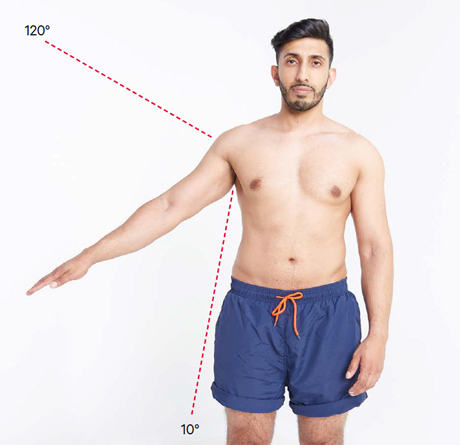Examination of the shoulder video
Watch now
A short video clip demonstrating how to examine the shoulder joints.
Look
- With the shoulder fully exposed, inspect the patient in stance from the front, from the side and from behind, checking for symmetry, posture, muscle wasting and scars.
Feel
- Assess the temperature over the front of the shoulder (the glenohumeral joint).
- Palpate the bony landmarks for tenderness, starting at the sternoclavicular joint, then the clavicle, acromioclavicular joint, acromion process and around the scapula.
- Palpate the glenohumeral joint line – anterior and posterior.
- Palpate the muscle bulk of the supraspinatus, infraspinatus and deltoid muscles.
Move
- Ask the patient to put their hands behind their head to assess external rotation, and then behind their back to assess internal rotation, comparing one side with the other. If there is a restriction in the latter movement, describe how far the patient can reach – for example, to the lumbar, lower thoracic or mid-thoracic level.
- With the elbow flexed at 90° and tucked into the patient’s side, assess external rotation of the shoulder. Loss of external rotation may indicate adhesive capsulitis (‘frozen shoulder’) or other glenohumeral joint problems.
- Ask the patient to raise their arms behind them and to the front. Assess flexion and extension.
- Ask the patient to abduct the arm to assess for a painful arc (between 10° and 120°) (see image below). Can you passively take the arm further? Be sure to assess abduction from behind the patient and observe scapular movement. Restricted glenohumeral movement can be compensated for by scapular/thoracic movements.

Function
- Function of the shoulder includes getting the hands behind the head and back. This is important in washing, toileting and other selfcare. If this has not been assessed during the screening examination, it should be done now.